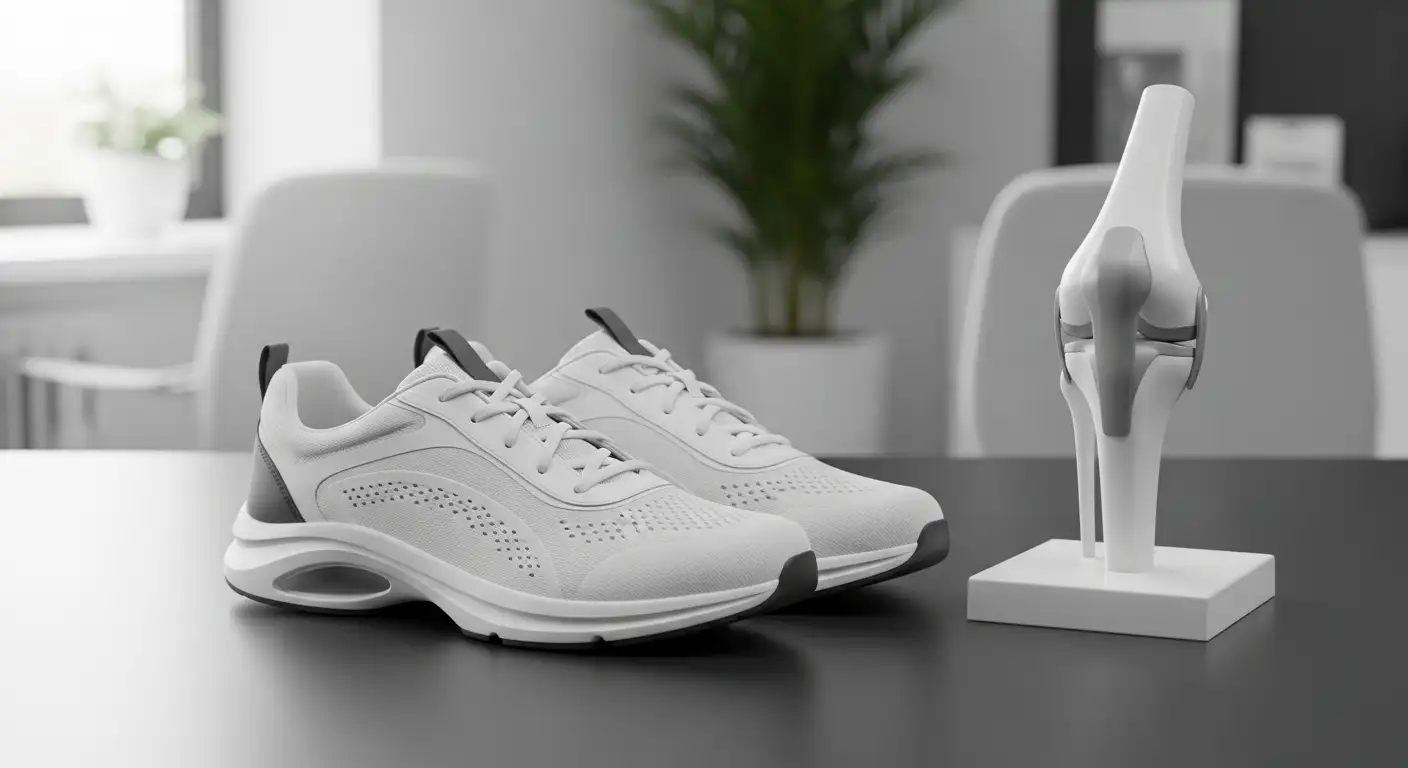Understanding Inner Knee Pain
Inner knee pain is a common complaint among individuals of all ages and can be especially uncomfortable during sleep. There are various causes of inner knee pain, and understanding these can help in finding the appropriate solution.
Causes of Inner Knee Pain
Inner knee pain when sleeping on your side could be due to a variety of conditions. These include medial plica syndrome, pes anserine bursitis, or iliotibial (IT) band syndrome. These conditions often result from overuse or repetitive strain, leading to discomfort on the inner side of the knee joint [1].

One typical cause of inner knee pain when sleeping on the side is iliotibial band syndrome (ITBS). This condition is characterized by discomfort on the outer side of the knee that can radiate to the inner knee due to tightness in the IT band or friction between the band and the knee joint.
Another reason for inner knee pain during side sleeping could relate to pes anserine bursitis. This condition involves inflammation of the bursa located between the shinbone and the tendons of the hamstring muscles, causing discomfort on the inner knee when lying on the side.
Other conditions like arthritis, a torn meniscus, joint misalignment, or osteoarthritis can also result in inner knee pain when sleeping on your side [2]. The pain felt in these conditions can become more noticeable when pressure is applied to the inner knee area during side sleeping.
Diagnosis of Inner Knee Pain
Given the numerous potential causes of inner knee pain when sleeping on your side, it's essential to get an accurate diagnosis. This typically involves a detailed medical history, a physical examination, and possibly diagnostic imaging tests like X-rays or MRIs. If you're dealing with persistent inner knee pain, especially during sleep, it's critical to consult a healthcare professional for a proper diagnosis and treatment plan.
It's important to remember that while this article provides useful information about the possible causes of inner knee pain when sleeping on your side, it should not be used as a substitute for professional medical advice. Always consult with a healthcare provider if you have concerns about your knee pain.
Conditions Related to Inner Knee Pain
Understanding the conditions that can cause inner knee pain while side sleeping is crucial for diagnosis and treatment. Several conditions, including Medial Plica Syndrome, Pes Anserine Bursitis, and Iliotibial Band Syndrome, are closely linked to this discomfort.
Medial Plica Syndrome
One cause of inner knee pain when side sleeping is Medial Plica Syndrome. This condition is related to the plica, a fold of tissue in the knee joint. Excessive bending and straightening of the knee can lead to irritation and inflammation of the plica, causing discomfort. When pressure is applied to the inner knee while side sleeping, the discomfort can become more noticeable [2].
Other symptoms of Medial Plica Syndrome include a catching or clicking sensation in the knee, pain when climbing stairs, and knee instability. Early diagnosis and treatment can alleviate the pain and prevent further complications.
Pes Anserine Bursitis
Pes Anserine Bursitis is another condition that can lead to inner knee pain when sleeping on the side. This condition involves inflammation of the bursa located between the shinbone and the tendons of the hamstring muscles. The inflammation can cause discomfort on the inner knee, which can be especially noticeable when lying on the side.
Common symptoms of Pes Anserine Bursitis include tenderness and pain on the inner side of the knee, swelling, and difficulty moving the knee. If left untreated, the condition can lead to chronic pain and limited mobility.
Iliotibial Band Syndrome
Iliotibial Band Syndrome (ITBS) is a common cause of knee pain, particularly among runners and cyclists. ITBS is characterized by pain on the outer side of the knee, which can radiate to the inner knee due to tightness in the IT band or friction between the band and the knee joint [2].
Symptoms of ITBS include a sharp or burning pain on the outer knee, swelling, and a snapping or popping sensation when the knee is bent or straightened. If ITBS is the cause of inner knee pain when side sleeping, measures such as physical therapy, stretching, and strengthening exercises can help relieve the discomfort.
Understanding these conditions can help individuals with inner knee pain when side sleeping seek appropriate treatment. It's important to consult with a healthcare professional for a proper diagnosis and personalized treatment plan.
Impact of Sleep Position on Knee Pain
Sleep position can significantly affect knee pain, especially inner knee pain. Those who prefer sleeping on their side often encounter challenges due to the pressure exerted on the inner side of the knee.
Challenges with Side Sleeping
Side sleeping might not be the best option for individuals experiencing inner knee pain. Conditions like medial plica syndrome, pes anserine bursitis, or iliotibial (IT) band syndrome can cause pain on the inner side of the knee joint, which is often aggravated by side sleeping.
One common cause of inner knee pain when sleeping on the side is iliotibial band syndrome (ITBS), characterized by pain on the outer side of the knee that can radiate to the inner knee due to tightness in the IT band or friction between the band and the knee joint.
Another reason for inner knee pain during side sleeping could be related to pes anserine bursitis, a condition that involves inflammation of the bursa located between the shinbone and the tendons of the hamstring muscles, causing discomfort on the inner knee when lying on the side.
Moreover, side sleeping can cause external rotation of the hip, which stretches the medial collateral ligament (MCL) on the inside of the knee, leading to discomfort.
Role of Pillow Placement
The placement of a pillow can play a vital role in managing inner knee pain when sleeping on the side. Using a pillow between the knees helps keep the knees, hips, and spine in alignment, reducing stress on the MCL and other structures inside the knee, thereby alleviating discomfort [3].
Often, inner knee pain at night can be worsened by keeping the knees bent for long periods while sleeping on the side. Straightening the legs slightly by using a pillow between the knees can help relieve pressure and reduce pain [4].
Also, inner knee pain can often be alleviated by using pillows to support the knees and keep them slightly apart while sleeping on your side [1].
In conclusion, side sleeping can aggravate inner knee pain, but strategic pillow placement can help manage this discomfort. Individuals suffering from inner knee pain also may benefit from strengthening exercises for the quadriceps, hamstrings, and hip muscles to support the knee joint and alleviate pain during side sleeping [3].
Management and Prevention Strategies
To mitigate the discomfort of inner knee pain when sleeping on the side, it's crucial to adopt effective management and prevention strategies. These include exercises and physical therapy, proper sleep hygiene, and seeking medical consultation.
Exercises and Physical Therapy
Regular exercises and physical therapy can help manage inner knee pain effectively. According to a study published in the Journal of the American Academy of Orthopaedic Surgeons, physical therapy is an effective way to help manage inner knee pain due to patellofemoral pain syndrome.
Strengthening the muscles around the knee joint, such as the quadriceps and hamstrings, can support the joint and prevent inner knee pain, especially at night. Exercises focusing on these areas can be beneficial. Likewise, increasing flexibility and mobility in the knee joint can help address muscular imbalances that contribute to knee pain.
Furthermore, strengthening areas like the core and gluteal muscles can enhance knee joint stability, reducing the risk of injury and pain. In addition to exercises, it's crucial to avoid activities that exacerbate inner knee pain [5].
Role of Proper Sleep Hygiene
Proper sleep hygiene plays a vital role in managing inner knee pain when sleeping on the side. When sleeping on your back, placing pillows beneath your knees can help alleviate knee pain. Side sleepers should place one or more pillows between their knees to find the most comfortable position.
Occupational therapists suggest that side sleepers experiencing knee pain should lie on the non-painful hip and use pillows between the legs. This practice helps alleviate discomfort and promote a better sleep position [7]. If you wake up in the night and find that the pillows have moved, simply reposition them for comfort and return to sleep.
Importance of Medical Consultation
If chronic or severe inner knee pain persists, it's crucial to consult a healthcare provider for an accurate diagnosis and appropriate treatment. Medical consultation becomes paramount if sudden or sharp knee pain arises without strenuous activity, if knee pain affects mobility or weight-bearing ability, or if conservative methods like rest and pain medication do not alleviate the knee pain.
By incorporating these management and prevention strategies, individuals experiencing inner knee pain when sleeping on their side can effectively navigate their discomfort and improve their quality of life.
Potential Complications of Knee Pain
Inner knee pain when sleeping on the side can be more than just a discomfort. Without proper management and treatment, it can lead to several complications, affecting mobility, increasing the risk of further injuries, and even leading to conditions such as osteoarthritis.
Effects on Mobility
One of the immediate complications of knee pain is the effect on mobility. Depending on the severity of the pain, it may limit an individual's ability to move around, perform daily tasks, or engage in physical activities. This lack of mobility can further contribute to a decline in overall health and wellbeing.
Risk of Further Injuries
Knee pain can also increase the risk of further injuries. According to a study referenced by NCBI, individuals with knee pain or a history of knee injury are more likely to experience a new knee injury within the following 12 months. Chronic knee symptoms or ipsilateral/contralateral knee injury increases the risk of a new knee injury (odds ratio [OR]=1.84, 95% confidence interval [CI]=1.57, 2.16 for chronic knee symptoms; prior ipsilateral knee injury OR=1.81, 95% CI=1.56, 2.09; prior contralateral knee injury OR=1.43, 95% CI=1.23, 1.66).
Moreover, knee pain can increase the risk of falls, particularly among older adults. A history of knee injury to the ipsilateral or contralateral knee may also be a risk factor for new knee injuries. Young individuals with an anterior cruciate ligament (ACL) tear are more than five times as likely to sustain another ACL tear in either knee.
Connection to Osteoarthritis
Long-term complications of knee pain can include an increased risk of developing osteoarthritis. Individuals with a history of knee injury are 3 to 6 times more likely to develop knee osteoarthritis (KOA) and are diagnosed with osteoarthritis approximately 10 years younger than individuals without a history of knee injury.
Understanding these risk factors is crucial for the prevention of osteoarthritis. By managing knee pain effectively and seeking timely medical attention, the risk of these complications can be significantly reduced.
Taking this into account, individuals experiencing inner knee pain when sleeping on the side should consider medical consultation and appropriate management strategies to alleviate the pain and prevent potential complications.
References
[1]: https://www.healthline.com/health/inner-knee-pain
[2]: https://sonusleep.com/blogs/news/knee-pain-sleeping-on-side
[3]: https://sonusleep.ca/blogs/news/knee-pain-sleeping-on-side
[4]: https://www.verywellhealth.com/throbbing-knee-pain-at-night-5112675
[5]: https://www.healthline.com/health/exercises-for-knee-pain
[6]: https://www.hss.edu/article_stretches-exercises-knee-pain.asp
[7]: https://www.arthritis.org/health-wellness/healthy-living/managing-pain/fatigue-sleep/arthritis-pain-at-night-tips-to-position-yourself





